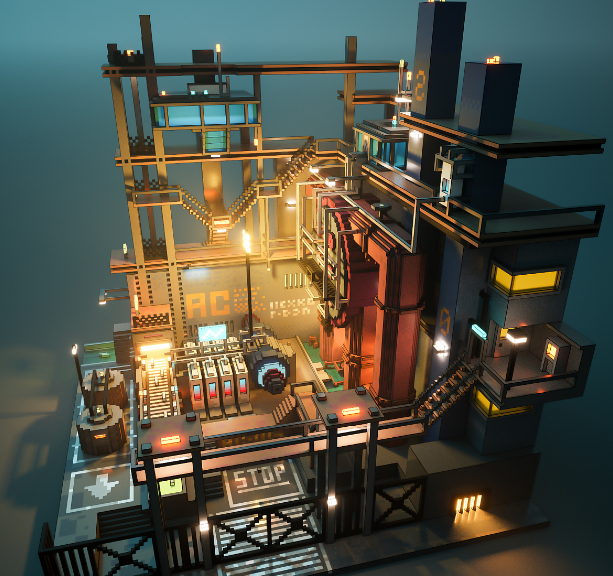Effective ways to improve safety instruments in petrochemical industry
1. Effective improvement of petrochemical safety instruments
In order to ensure the integrity of instrument system performance of equipment in petrochemical production, a comprehensive analysis is carried out on it. Through the analysis results, it is known that there are problems in safety instrument system that are not conducive to system integrity. The problems and optimization measures are analyzed in detail as follows:
1.1 Scientific design of sensor redundancy
As far as redundant configuration is concerned, it plays an important role in instrument systems and is also the main content of system design. However, not all sensors are suitable for the design of redundant configuration [1]. SIL is regarded as the main probability requirement of sensor failure, if the sensor in the safety instrument system meets this requirement, it is necessary for relevant personnel to select the integrated sensor, so as to make the safety instrument system meet the design requirements. When the sensor does not meet the requirements of SIL, the use of redundant sensors should be strengthened. However, in the application of redundant sensors, designers need to fully consider the safety of the system, while strengthening the interlocking action and frequency as the basis for rational use of the logical structure, not only to comprehensively consider the applicability of the system, but also to ensure that the instrument system has reliable security, so in practice, A two-out-of-three structure in a logical structure should be used appropriately.

1.2 Carry out a comprehensive design of the safety instrument system
SIL is the main requirement for the safety and integrity of the function of the instrument system. However, the function of the safety instrument system is not determined by one device, but by several devices during operation, which mainly include: sensors, actuators and logic controllers. At the same time, there is a corresponding relationship between each instrument, the SIL between the three and the SIL of the logical sensing has an important relationship, at this time, the relevant staff should pay more attention to, especially the failure rate of the relevant instrument, which has a certain corresponding relationship with the level of SIL. For example, in the analysis of the relevant logical control, if the control unit has a SIL level of 3, the real efficiency of the controller will be less than 0.1%, and in the case of the sensor, when its SIL level is 2, the failure rate will be less than 1%. At the same time, the corresponding execution system is analyzed, and the structure is a level 1 SIL, and the failure rate of the execution structure will be less than 10% [2]. However, in practical applications, the reliability of safety instrument system operation will be directly affected by the logic controller. In addition, according to the investigation in the production process of petrochemical enterprises, many staff are too dependent on the reliability of the logic controller, which is also the main problem in the actual production process. Due to the greater emphasis on it, they ignore the importance of the actuator. If they do not pay more attention to the failure rate level of the actuator, it will lead to problems in the function of the entire safety instrument system. It can even make the safety of the instrument lose its function. Therefore, in the design of safety instrument system, relevant designers need to analyze from an objective point of view, pay attention to the comprehensive design of the system, ensure that various instruments can meet the standard of failure rate level in the design process, provide guarantee for the improvement of the safety level of the system, and make its safety performance meet the safety level standard.

1.3 Performing Integration Configurations
In the actual design process, there will be more failure rate problems, so relevant personnel need to fully study the failure rate level of each instrument in the process of system design, and analyze the failure rate level of the whole system through the parallel relationship. For example, when the failure rate of the logic controller is level 3, which meets the specific requirements of the system, in the actual design process, the designer also controls the actual failure rate at level 3, while the failure rate of the sensor and the actuator are respectively controlled at level 2, then the failure rate of the whole system is also level 2 through calculation and analysis. In this case, according to the specific requirements of the safety instrument system, if the failure rate of the whole system is level 2, the standard of the system cannot be met. If this happens, the relevant designer should take appropriate measures to deal with it, usually using redundant configuration to improve the sensor. For example, in the application of redundant configuration, according to the characteristics of the sensor failure rate to choose the appropriate way to configure, through the analysis of the above content, the use of two-to-one redundancy method, can make the safety level of the system to be improved. At the same time, in the process of redundant configuration, the designer can also configure the actuator and solenoid valve at the same time, which should be scientifically and reasonably configured according to the characteristics of the two, so that the safety level of the entire system has been effectively improved, so that it reaches the standard of SIL3, in order to promote the safety of the system to meet the specific requirements of the staff in the production operation. Because different situations in the instrument system have different requirements for the actuator, and there are certain differences in the type and function of the actuator, different actuators have different redundant configuration methods, requirements and standards in the actual design process. For example, in the process of system design, the main performance of the actuator is to cut the interlock, and at this time, the two actuators in the system are connected in series and applied, which can effectively improve the SIL. Therefore, in the design process, the designer should make a detailed analysis according to the actual situation of the system, based on this, the selection of the actuator, and according to the functional characteristics of the actuator reasonable redundancy configuration, only in this way, can promote the improvement of the SIL level.

1.4 Strengthen the corresponding management work
Although oil care enterprises have high requirements for instrument systems, and the state also has certain standard requirements for it, according to the actual application analysis of instrument systems, it is found that there are certain problems in the safety protection work of the system, actual operation and construction, or the cognition of risks in production, and it cannot meet people's requirements. For example, in the actual design of safety instrument system, during the design process, no scientific method is adopted in the calculation and estimation of SIF, which will cause problems in redundancy configuration. The main problems are reflected in fault tolerance. In this process, the guidance of design drawings and schemes is ignored only for the completion of the design, resulting in deviations and other situations in the construction. In this case, the safety performance of the instrument system will decline. Therefore, in order to ensure the stability, safety and reliability of the instrument system during operation, relevant managers should conduct comprehensive management of the instrument system, and formulate corresponding management plans for the implementation of management work. This ensures that the safety of the instrument safety system during operation can meet the requirements of the staff.

2 Safety instrument reliability fault-tolerant design
As far as the design of instrument system is concerned, if the petrochemical system is designed, the designer should protect the instrument tested by the instrument in advance, conduct a comprehensive analysis of the process behavior involved in the operation of the instrument, evaluate the overall safety, and make a detailed division of the safety instrument system according to the evaluation content [3]. In addition, if an instrument system with a low safety level is found in the process of analysis and evaluation, the design of the instrument system should be integrated into DCS at this time, so as to reasonably control the design cost of the system. In addition, for the loop with high failure rate, its application in production not only has a greater threat, but also has a direct impact on the production order. Therefore, the safety instrument system should be designed for the loop to realize the control of the safety performance of the loop and reflect the specific function of the loop. This provides guarantee for the safety and reliability of production.
- EMERSON
- Honeywell
- CTI
- Rolls-Royce
- General Electric
- Woodward
- Yaskawa
- xYCOM
- Motorola
- Siemens
- Rockwell
- ABB
- B&R
- HIMA
- Construction site
- electricity
- Automobile market
- PLC
- DCS
- Motor drivers
- VSD
- Implications
- cement
- CO2
- CEM
- methane
- Artificial intelligence
- Titanic
- Solar energy
- Hydrogen fuel cell
- Hydrogen and fuel cells
- Hydrogen and oxygen fuel cells
- tyre
- Chemical fiber
- dynamo
- corpuscle
- Pulp and paper
- printing
- fossil
- FANUC
- Food and beverage
- Life science
- Sewage treatment
- Personal care
- electricity
- boats
- infrastructure
- Automobile industry
- metallurgy
- Nuclear power generation
- Geothermal power generation
- Water and wastewater
- Infrastructure construction
- Mine hazard
- steel
- papermaking
- Natural gas industry
- Infrastructure construction
- Power and energy
- Rubber and plastic
- Renewable energy
- pharmacy
- mining
- Plastic industry
- Schneider
- Kongsberg
- NI
- Wind energy
- International petroleum
- International new energy network
- gas
- WATLOW
- ProSoft
- SEW
- wind
- ADVANCED
- Reliance
- YOKOGAWA
- TRICONEX
- FOXBORO
- METSO
- MAN
- Advantest
- ADVANCED
- ALSTOM
- Control Wave
- AB
- AMAT
- STUDER
- KONGSBERG
- MOTOROLA
- DANAHER MOTION
- Bently
- Galil
- EATON
- MOLEX
- Triconex
- DEIF
- B&W
- ZYGO
- Aerotech
- DANFOSS
- KOLLMORGEN
- Beijer
- Endress+Hauser
- MOOG
- KB
- Moxa
- Rexroth
- YAMAHA
- Johnson
- Westinghouse
- WAGO
- TOSHIBA
- TEKTRONIX


Email:wang@kongjiangauto.com



































































































































